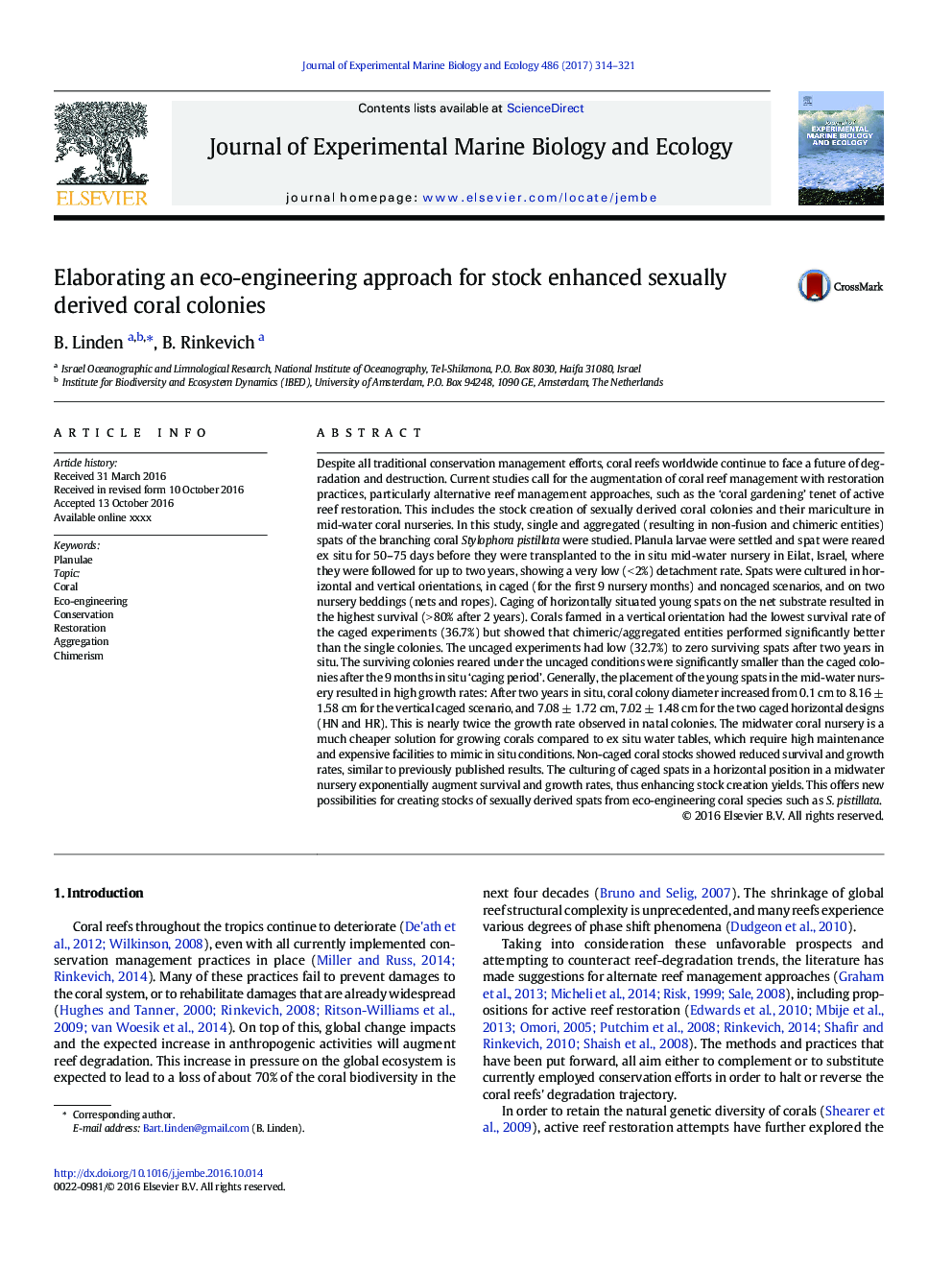| کد مقاله | کد نشریه | سال انتشار | مقاله انگلیسی | نسخه تمام متن |
|---|---|---|---|---|
| 8849050 | 1618389 | 2017 | 8 صفحه PDF | دانلود رایگان |
عنوان انگلیسی مقاله ISI
Elaborating an eco-engineering approach for stock enhanced sexually derived coral colonies
ترجمه فارسی عنوان
توسعه یک رویکرد مهندسی محیط زیست برای افزایش سهام مستعمرات مرجانی مشتق شده از جنس
دانلود مقاله + سفارش ترجمه
دانلود مقاله ISI انگلیسی
رایگان برای ایرانیان
کلمات کلیدی
موضوعات مرتبط
علوم زیستی و بیوفناوری
علوم کشاورزی و بیولوژیک
علوم آبزیان
چکیده انگلیسی
Despite all traditional conservation management efforts, coral reefs worldwide continue to face a future of degradation and destruction. Current studies call for the augmentation of coral reef management with restoration practices, particularly alternative reef management approaches, such as the 'coral gardening' tenet of active reef restoration. This includes the stock creation of sexually derived coral colonies and their mariculture in mid-water coral nurseries. In this study, single and aggregated (resulting in non-fusion and chimeric entities) spats of the branching coral Stylophora pistillata were studied. Planula larvae were settled and spat were reared ex situ for 50-75 days before they were transplanted to the in situ mid-water nursery in Eilat, Israel, where they were followed for up to two years, showing a very low (< 2%) detachment rate. Spats were cultured in horizontal and vertical orientations, in caged (for the first 9 nursery months) and noncaged scenarios, and on two nursery beddings (nets and ropes). Caging of horizontally situated young spats on the net substrate resulted in the highest survival (> 80% after 2 years). Corals farmed in a vertical orientation had the lowest survival rate of the caged experiments (36.7%) but showed that chimeric/aggregated entities performed significantly better than the single colonies. The uncaged experiments had low (32.7%) to zero surviving spats after two years in situ. The surviving colonies reared under the uncaged conditions were significantly smaller than the caged colonies after the 9 months in situ 'caging period'. Generally, the placement of the young spats in the mid-water nursery resulted in high growth rates: After two years in situ, coral colony diameter increased from 0.1 cm to 8.16 ± 1.58 cm for the vertical caged scenario, and 7.08 ± 1.72 cm, 7.02 ± 1.48 cm for the two caged horizontal designs (HN and HR). This is nearly twice the growth rate observed in natal colonies. The midwater coral nursery is a much cheaper solution for growing corals compared to ex situ water tables, which require high maintenance and expensive facilities to mimic in situ conditions. Non-caged coral stocks showed reduced survival and growth rates, similar to previously published results. The culturing of caged spats in a horizontal position in a midwater nursery exponentially augment survival and growth rates, thus enhancing stock creation yields. This offers new possibilities for creating stocks of sexually derived spats from eco-engineering coral species such as S. pistillata.
ناشر
Database: Elsevier - ScienceDirect (ساینس دایرکت)
Journal: Journal of Experimental Marine Biology and Ecology - Volume 486, January 2017, Pages 314-321
Journal: Journal of Experimental Marine Biology and Ecology - Volume 486, January 2017, Pages 314-321
نویسندگان
B. Linden, B. Rinkevich,
